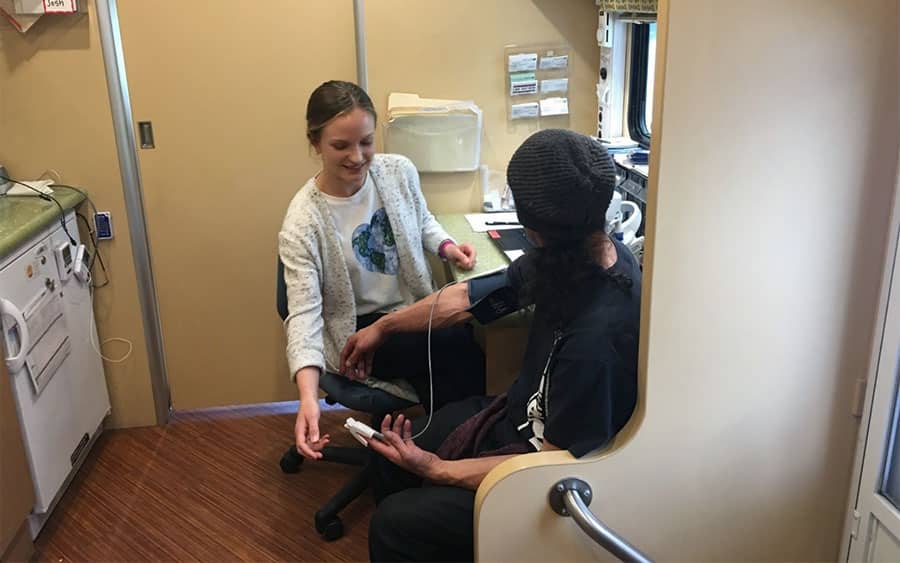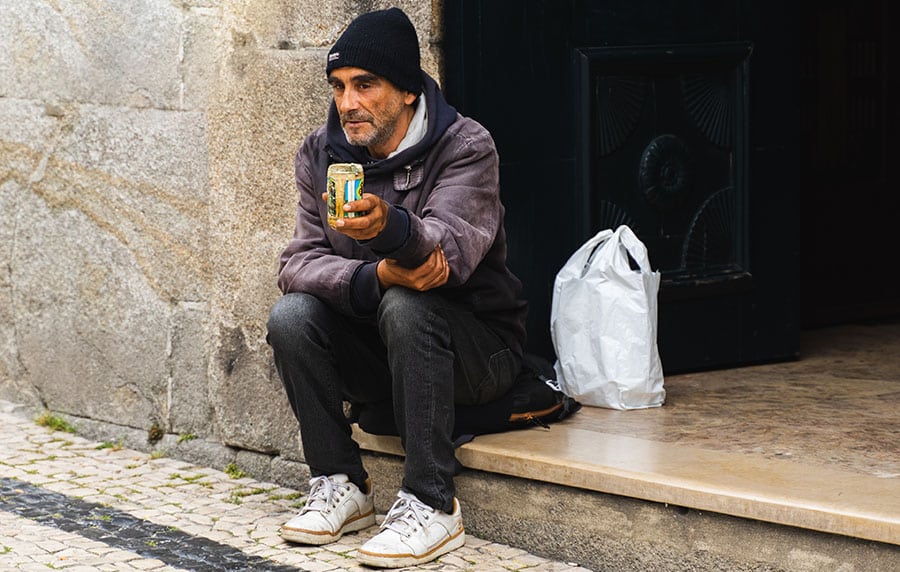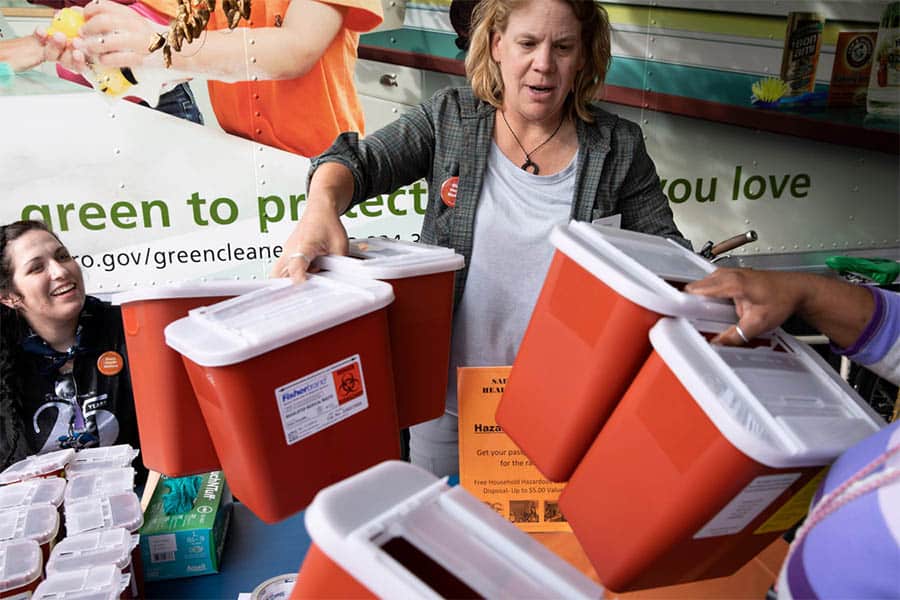What Is Harm Reduction For Addiction?
Everyone practices harm reduction in some shape or form; from wearing a seatbelt to carrying an EpiPen, we seek to reduce the risk of harm every place we go. It’s in our nature. We even insist that people practice reducing harm to themselves and others and provide them with the tools to do so.
However, the type of harm reduction we’ll be talking about in this article has to do with substance abuse and how some countries, scientists, and addiction treatment providers are using some of its strategies to reshape the world of substance abuse. Harm reduction strategies can serve as adequate overdose prevention tactics, reduce the risk of HIV and hepatitis, and help someone recover from addiction to injectable drugs or other substances.
“If you are loved, you have a chance. For a hundred years we have been singing war songs about addicts. All along, we should have been singing love songs to them.”

What Is Harm Reduction?
First and foremost, let’s get some introductory knowledge on this topic. Harm reduction, as an approach to problematic drug use and innovative health care methods, is the idea of providing drug users with the tools and education they need to make informed decisions about their substance use. It is an approach to addiction recovery that encourages safe habits when consuming drugs to minimize any adverse effects on the individual’s health.
The primary goal of harm reduction is to promote an atmosphere of compassion and acceptance for drug users. Harm reduction is a set of practices aimed at reducing the harmful effects of drug-related harm, as well as a social movement dedicated to destigmatizing drug addiction and promoting the respect and rights of people who are addicted to drugs. At its core, harm reduction strategies aim to help users no matter what their state of mind is the time (even if they claim they aren’t ready for full abstinence). Harm reduction is about keeping drug users safe so that they have an opportunity to recover.

Harm reduction is not a one-size-fits all approach. There is no universal definition for harm reduction, and sometimes harm reduction can be a subjective term. Harm reduction policies and interventions should be based on the needs of the individual and their community.
The National Harm Reduction Coalition lists the following as what they consider the central principles to harm reduction practice:
- Accepts, for better or worse, that licit and illicit drug use is part of our world and chooses to work to minimize its harmful effects rather than simply ignore or condemn them.
- Understands drug use as a complex, multi-faceted phenomenon that encompasses a continuum of behaviors from severe use to total abstinence, and acknowledges that some ways of using drugs are clearly safer than others.
- Establishes quality of individual and community life and well-being — not necessarily cessation of all drug use — as the criteria for successful interventions and policies
- Calls for the non-judgmental, non-coercive provision of services and resources to people who use drugs and the communities in which they live in order to assist them in reducing attendant harm
- Ensures that people who use drugs and those with a history of drug use routinely have a real voice in the creation of programs and policies designed to serve them.
- Affirms people who use drugs (PWUD) themselves as the primary agents of reducing the harms of their drug use and seeks to empower PWUD to share information and support each other in strategies which meet their actual conditions of use.
- Recognizes that the realities of poverty, class, racism, social isolation, past trauma, sex-based discrimination, and other social inequalities affect both people’s vulnerability to and capacity for effectively dealing with drug-related harm
- Does not attempt to minimize or ignore the real and tragic harm and danger that can be associated with illicit drug use.
Harm Reduction In Action: Portugal’s Success
In 2001, an estimated 1% of Portugal’s population suffered from addiction to heroin. Consequently, the country possessed the highest rates of HIV infection in the European Union at this time. In response, Portugal decriminalized the personal possession of drugs and focused instead on the drug user population’s health.

Portugal pivoted its approach to addiction and chose to approach the struggle of addiction for what substance use disorders truly are: a disease and biological brain disorder. And as many people know, developing a biological or medical condition is not a choice. This country focused its resources and efforts on expanding and improving substance abuse prevention, treatment, harm reduction, and social reintegration programs across their nation.
Since 2001, the rate of drug-induced deaths in Portugal has dropped and is five times lower than the EU average; the rates of HIV infection also have seen a significant drop over the last two decades.
The Need For Connection: A Vital Part Of Recovery
Journalist and writer Johann Hari has researched and spoken at length on addiction and harm reduction. He found human beings have a natural and innate need to bond, and when they’re happy and healthy, they bond and connect with other people. However, if an individual cannot do that because they are traumatized or isolated, they will strive to bond with something that will give them a sense of relief. In many cases, this may be drugs such as alcohol, cocaine, heroin, or stimulants. It could also be gambling, pornography, or food. Either way, people seek connection to something because it is in our nature.

That’s what we want as human beings. Hari believes that, at its core, addiction is about not being able to bear being present in your own life, advocating for harm reduction, and recognizing that acceptance and compassion is the only way we can save anyone struggling with drug use. Harm reduction is based on scientifically-proven practices that lower the risk of drug users contracting Hepatitis C or HIV, developing an infection, or overdosing.
Check Your Insurance Coverage for FREE
Find out if your insurance covers rehab in minutes. We accept most insurance.
Goals Of Harm Reduction
Unfortunately, inpatient or outpatient addiction treatment is not an option for everyone, and those who cannot afford it or who are not ready to seek it are often overlooked. Our current stigmatizing, shaming and incarcerating practices promotes further feelings of isolation and insignificance for the addict. It is time for us to meet drug users where they are. Harm reduction methods create an environment of acceptance and love. They were aiming to educate drug users on safe practices, rather than demanding abstinence.
Harm Reduction For Opioid Use
Harm reduction strategies can be used to help any individual struggling with addiction. However, harm reduction strategies may be especially useful for those struggling with opioid abuse. The following programs are popular harm reduction services amongst those looking to implement strategies for opioid abuse:

Misconceptions About Harm Reduction And Addiction
We often criticize, judge, and isolate drug addicts, condemning, and punishing them for a health condition they never asked for. We all have experienced addiction symptoms, from needing a cup of coffee in the morning to craving the content on our smartphones. We all struggle with behaviors that spike our dopamine levels. However, some substances build a stronger hold on our brains.
More often than not, people who use drugs do so to alleviate emotional pain. A common misconception about opioid addiction is that once individuals use opioids, they are instantly hooked and an “addict for life.”
This misrepresentation stems from a series of experiments conducted early in the 20th century. The experiments placed a rat in a cage with two water bottles, one filled with regular water the other filled with water laced with cocaine or heroin. The study concluded that nearly all the rats preferred the drugged water and would typically kill themselves fairly quickly.
In the 1970s, a second (less popular) a study was conducted by Bruce Alexander, a psychology professor in Vancouver. Alexander’s analysis included a second cage he called “Rat Park,” it consisted of everything a rat needed to live a happy life, cheese, tunnels, balls to play with, and plenty of other rat friends. The rats were presented with the same choice between regular water and drug water.
What Alexander found was that in Rat Park, the rats preferred the regular water. The rats rarely used the drug water and never used it compulsively. This experiment is pivotal in our understanding of addiction. The overdose rate went from 100 percent when the rats were alone and disconnected to zero when they had a connection and were given purpose.
Many people are first introduced to opioids as a way of treating physical pain; however, addicts continue to use it to relieve the pain they have always felt inside. Their purpose becomes finding and obtaining drugs. Harm reduction aims to treat the source of pain within each individual, recognizing drug use as a disorder resulting from a much more insidious disease.
Is Harm Reduction Right For Everyone?
Harm reduction methods are not right for everyone. For example, some people wish to achieve abstinence when seeking treatment for their substance abuse issues, while others may choose to reduce their drug use rather than stop completely. Those who aren’t ready to stop still need protection and options.
Hotel California by the Sea stands for the radical de-stigmatization of substance use disorders and supports the ever-changing environment of addiction medicine. We work tirelessly to provide the most customized and up-to-date treatment methods to clients in the United States and help our patients achieve freedom from substance abuse issues. Drug use is a public health crisis, but together, we can change the world of addiction and reduce the harm of those inflicted with substance use disorders in our country.
Reach out to Hotel California by the Sea
Our admissions specialists are prepared to walk you through the best possible options for treating your drug or alcohol abuse.
Sources:
https://time.com/longform/portugal-drug-use-decriminalization/
https://transformdrugs.org/drug-decriminalisation-in-portugal-setting-the-record-straight/
https://harmreduction.org
https://www.drugpolicy.org/issues/harm-reduction
https://www.youtube.com/watch?v=PY9DcIMGxMs&ab_channel=TED
https://www.youtube.com/watch?v=fsC7epItHXI&ab_channel=TEDxTalks
